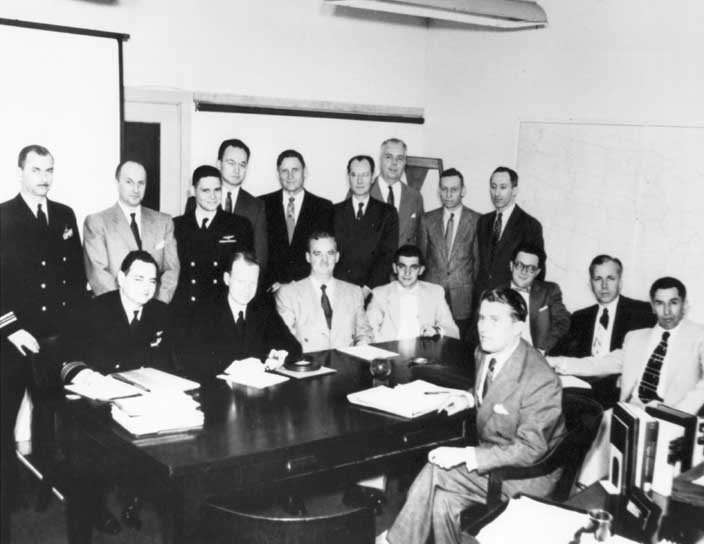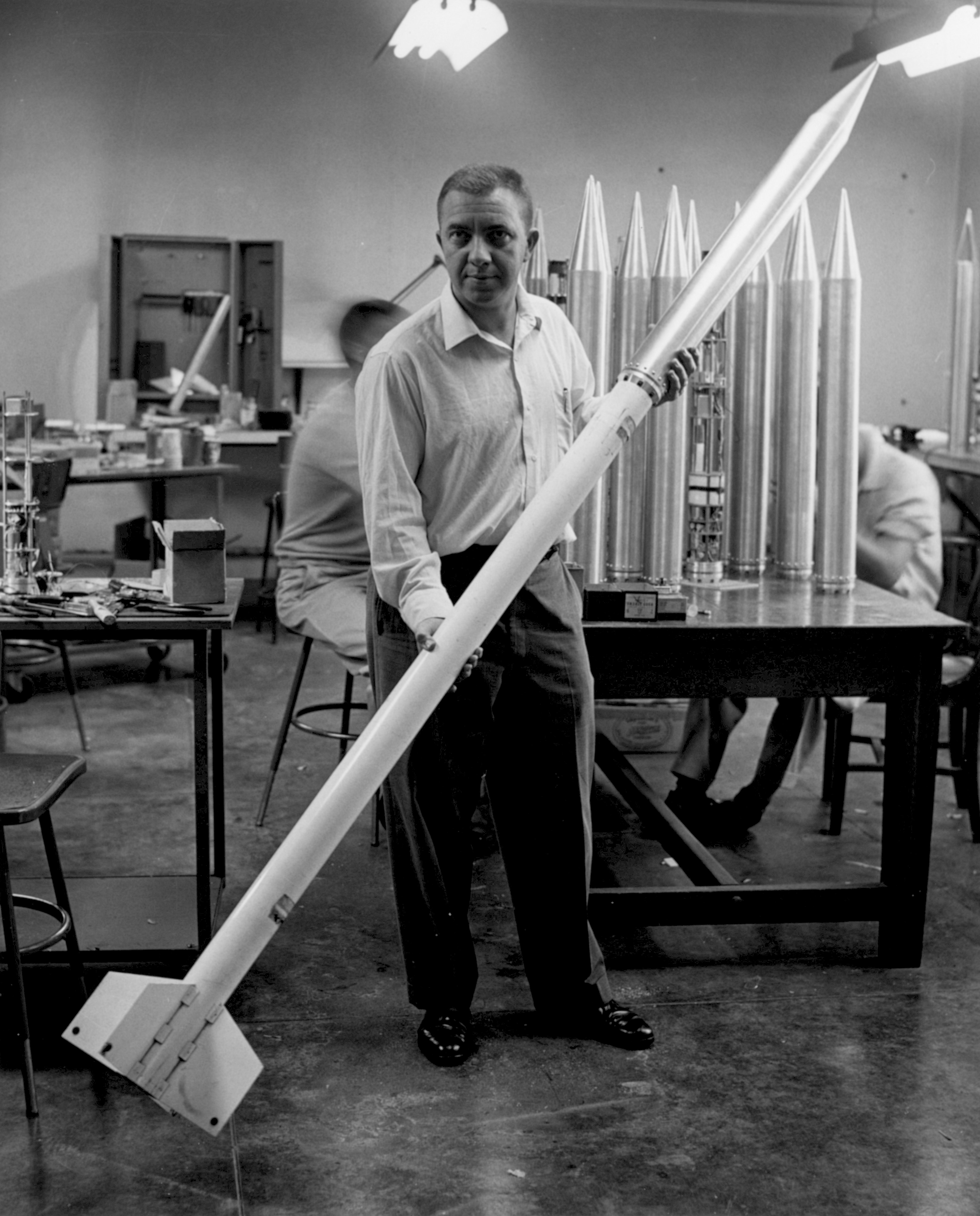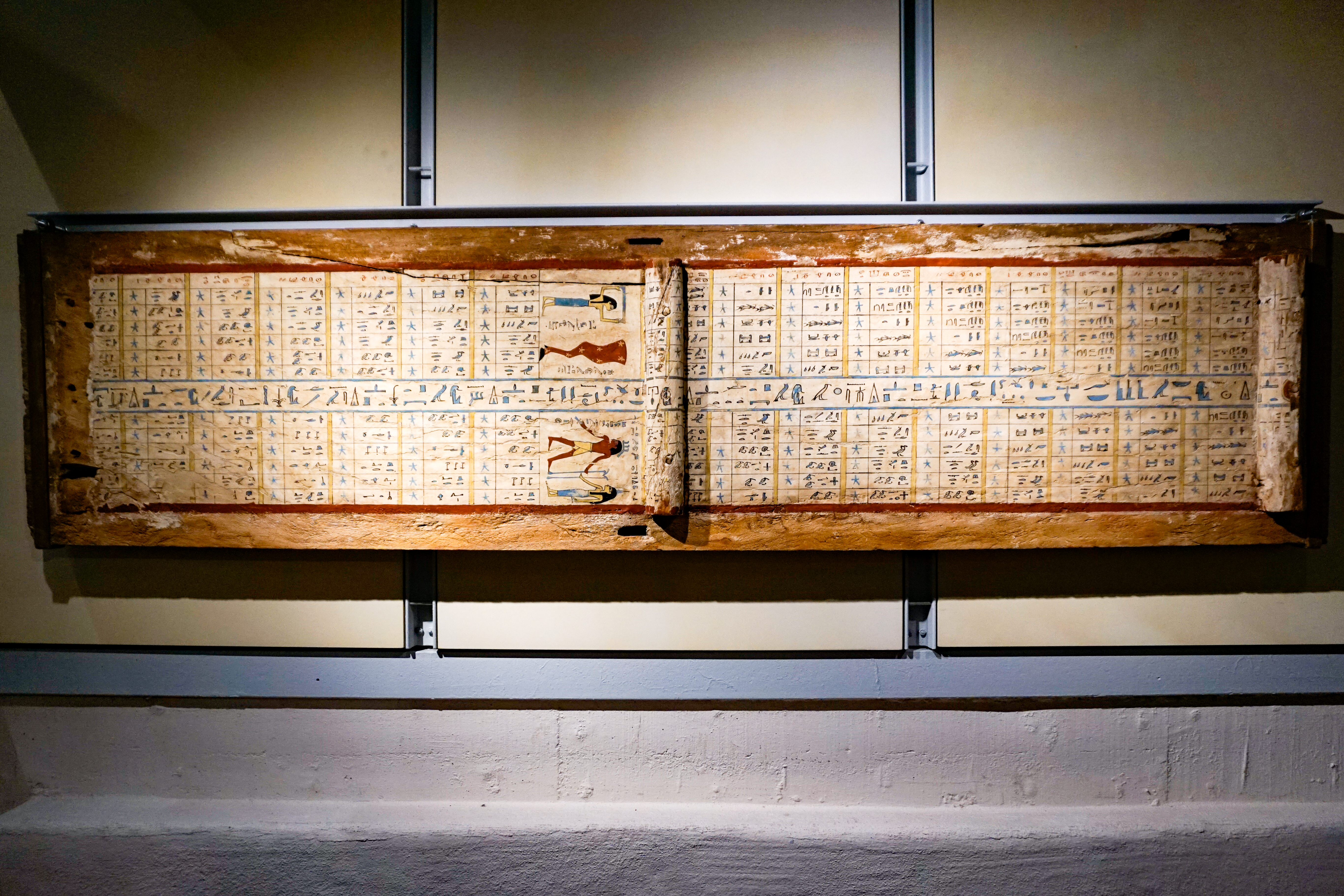|
Project Orbiter
Project Orbiter was a proposed United States spacecraft, an early competitor to Project Vanguard. It was jointly run by the United States Army and United States Navy. It was ultimately rejected by the Ad Hoc Committee on Special Capabilities, which selected Project Vanguard instead. Although the project was canceled on 3 August 1955, the basic design was used for the Juno I rocket which launched Explorer 1, the first satellite launched by the United States. Proposal In the 1920s and 1930s, the German Society for Space Travel (''Verein für Raumschiffahrt,'' referred to as ''VfR'' by its founders) began to gain in popularity, with membership growing from outside of Germany as well as within. The primary cause for the ''VfR's'' gaining worldwide appeal was due to the writings of mathematician Hermann Oberth who detailed, in a 1923 publication entitled ''The Rocket into Interplanetary Space'', the mechanics of placing a satellite into Earth orbit. Herman Potočnik was the first ... [...More Info...] [...Related Items...] OR: [Wikipedia] [Google] [Baidu] |
Spacecraft
A spacecraft is a vehicle that is designed spaceflight, to fly and operate in outer space. Spacecraft are used for a variety of purposes, including Telecommunications, communications, Earth observation satellite, Earth observation, Weather satellite, meteorology, navigation, space colonization, Planetary science, planetary exploration, and Space transport, transportation of Human spaceflight, humans and cargo spacecraft, cargo. All spacecraft except single-stage-to-orbit vehicles cannot get into space on their own, and require a launch vehicle (carrier rocket). On a sub-orbital spaceflight, a space vehicle enters space and then returns to the surface without having gained sufficient energy or velocity to make a full Geocentric orbit, Earth orbit. For orbital spaceflights, spacecraft enter closed orbits around the Earth or around other Astronomical object, celestial bodies. Spacecraft used for human spaceflight carry people on board as crew or passengers from start or on orbit ... [...More Info...] [...Related Items...] OR: [Wikipedia] [Google] [Baidu] |
Communications Satellite
A communications satellite is an artificial satellite that relays and amplifies radio telecommunication signals via a Transponder (satellite communications), transponder; it creates a communication channel between a source transmitter and a Radio receiver, receiver at different locations on Earth. Communications satellites are used for television, telephone, radio, internet, and military applications. Many communications satellites are in geostationary orbit above the equator, so that the satellite appears stationary at the same point in the sky; therefore the satellite dish antennas of ground stations can be aimed permanently at that spot and do not have to move to track the satellite. Others form satellite constellations in low Earth orbit, where antennas on the ground have to follow the position of the satellites and switch between satellites frequently. The radio waves used for telecommunications links travel by Line-of-sight propagation, line of sight and so are obstructe ... [...More Info...] [...Related Items...] OR: [Wikipedia] [Google] [Baidu] |
V-2 Rocket
The V2 (), with the technical name ''Aggregat (rocket family), Aggregat-4'' (A4), was the world's first long-range missile guidance, guided ballistic missile. The missile, powered by a liquid-propellant rocket engine, was developed during the Second World War in Nazi Germany as a "V-weapons, vengeance weapon" and assigned to attack Allies of World War II, Allied cities as retaliation for the Strategic bombing during World War II#The British later in the war, Allied bombings of German cities. The rocket also became the first artificial object to travel into space by crossing the Kármán line (edge of space) with the vertical launch of MW 18014 on 20 June 1944. Research of military use of long-range rockets began when the graduate studies of Wernher von Braun were noticed by the German Army. A series of prototypes culminated in the A4, which went to war as the . Beginning in September 1944, more than 3,000 were launched by the Wehrmacht against Allied targets, first London and ... [...More Info...] [...Related Items...] OR: [Wikipedia] [Google] [Baidu] |
White Sands Missile Range
White Sands Missile Range (WSMR) is a United States Army military testing area and firing range located in the US state of New Mexico. The range was originally established in 1941 as the Alamogordo Bombing and Gunnery Range, where the Trinity test site lay at the northern end of the Range, in Socorro County near the towns of Carrizozo and San Antonio. It then became the White Sands Proving Ground on 9July 1945. White Sands National Park founded in the 1930s is located within the range. Significant events *The missile range was originally established in 1941 as the Alamogordo Bombing and Gunnery Range. *On 16 July 1945, the first atomic bomb (code named Trinity) was test detonated at Trinity Site near the northern boundary of the range, seven days after the White Sands Proving Ground was officially established, near the towns of Carrizozo and San Antonio. (). *After the conclusion of World War II, 100 long-range German V-2 rockets that were captured by U.S. military troops ... [...More Info...] [...Related Items...] OR: [Wikipedia] [Google] [Baidu] |
James Van Allen
James Alfred Van Allen (September 7, 1914August 9, 2006) was an American space physicist at the University of Iowa. He was instrumental in establishing the field of magnetospheric research in space. The Van Allen radiation belts were named after him, following his discovery using Geiger–Müller tube instruments on the 1958 satellites ( Explorer 1, Explorer 3, and Pioneer 3) during the International Geophysical Year. Van Allen led the scientific community in putting scientific research instruments on space satellites. Early years and education James Van Allen was born on September 7, 1914, on a small farm near Mount Pleasant, Iowa. As a child, he was fascinated by mechanical and electrical devices and was an avid reader of ''Popular Mechanics'' and ''Popular Science'' magazines. He once horrified his mother by constructing a Tesla coil that produced foot-long sparks and caused his hair to stand on end. A fellowship allowed him to continue studying nuclear physics at the ... [...More Info...] [...Related Items...] OR: [Wikipedia] [Google] [Baidu] |
Hans Geiger
Johannes Wilhelm Geiger ( , ; ; 30 September 1882 – 24 September 1945) was a German nuclear physicist. He is known as the inventor of the Geiger counter, a device used to detect ionizing radiation, and for carrying out the Rutherford scattering experiments, which led to the discovery of the atomic nucleus. He also performed the Bothe–Geiger coincidence experiment, which confirmed the conservation of energy in light-particle interactions. He was the brother of meteorologist and climatologist Rudolf Geiger. Biography Geiger was born in 1882 in Neustadt an der Haardt. He was one of five children born to the Indologist Wilhelm Ludwig Geiger, who was a professor at the University of Erlangen. In 1902, Geiger started studying physics and mathematics at Erlangen and was awarded a doctorate in 1906. His thesis was on electrical discharges through gases. He received a fellowship to the University of Manchester and worked as an assistant to Arthur Schuster. In 1907, after ... [...More Info...] [...Related Items...] OR: [Wikipedia] [Google] [Baidu] |
University Of Tübingen
The University of Tübingen, officially the Eberhard Karl University of Tübingen (; ), is a public research university located in the city of Tübingen, Baden-Württemberg, Germany. The University of Tübingen is one of eleven German Excellence Universities. The University of Tübingen is especially known as a centre for the study of plant biology, medicine, law, archeology, ancient cultures, philosophy, theology, religious studies, humanities, and more recently as a center of excellence for artificial intelligence. The university's noted alumni and faculty include presidents, a pope, EU Commissioners, judges of the Federal Constitutional Court, and Johannes Kepler. The university is associated with eleven List of Nobel laureates, Nobel laureates, especially in the fields of medicine and chemistry. History The University of Tübingen was founded in 1477 by Count Eberhard I, Duke of Württemberg, Eberhard V (Eberhard im Bart, 1445–1496), later the first Duke of Württemberg ... [...More Info...] [...Related Items...] OR: [Wikipedia] [Google] [Baidu] |
Ernst Stuhlinger
Ernst Stuhlinger (December 19, 1913 – May 25, 2008) was a German-American atomic, electrical, and rocket scientist. After being brought to the United States as part of Operation Paperclip, he developed guidance systems with Wernher von Braun's team for the US Army, and later was a scientist with NASA. He was also instrumental in the development of the ion engine for long-endurance space flight, and a wide variety of scientific experiments. Life Stuhlinger was born in Niederrimbach (now part of Creglingen), Württemberg, Germany. At age 23, he earned his doctorate in physics at the University of Tübingen in 1936, working with Otto Haxel, Hans Bethe and his advisor Hans Geiger. In 1939 to 1941, he worked in Berlin, on cosmic rays and nuclear physics as an assistant professor at ''Technische Hochschule Berlin'' (today Technische Universität Berlin) developing innovative nuclear detector instrumentation. Despite showing promise as a scientist, in 1941 Stuhlinger was drafted ... [...More Info...] [...Related Items...] OR: [Wikipedia] [Google] [Baidu] |
Redstone (rocket Family)
The Redstone family of rockets consisted of a number of American ballistic missiles, sounding rockets and expendable launch system, expendable launch vehicles operational during the 1950s and 1960s. The first member of the Redstone family was the PGM-11 Redstone missile, from which all subsequent variations of the Redstone were derived. The Juno 1 version of the Redstone launched Explorer 1, the first U.S. orbital satellite in 1958 and the Mercury-Redstone variation carried the first two U.S. astronauts into space in 1961. The rocket was named for the Redstone Arsenal in Huntsville, Alabama where it was developed. PGM-11 Redstone First launched in 1953, the PGM-11 Redstone was a short-range surface-to-surface ballistic missile in active service with the U.S. Army from June 1958 to June 1964; and was used for the first U.S. live nuclear missile tests. It was built by Chrysler for the United States Army Ballistic Missile Agency (ABMA) and was deployed in West Germany. George Huebn ... [...More Info...] [...Related Items...] OR: [Wikipedia] [Google] [Baidu] |
Solid-fuel Rocket
A solid-propellant rocket or solid rocket is a rocket with a rocket engine that uses Rocket propellant#Solid chemical propellants, solid propellants (fuel/oxidizer). The earliest rockets were solid-fuel rockets powered by gunpowder. The inception of gunpowder rockets in warfare can be credited to the ancient Chinese, and in the 13th century, the Mongols played a pivotal role in facilitating their westward adoption. All rockets used some form of solid or powdered propellant until the 20th century, when liquid-propellant rockets offered more efficient and controllable alternatives. Because of their simplicity and reliability, solid rockets are still used today in military armaments worldwide, model rockets, solid rocket boosters and on larger applications. Since solid-fuel rockets can remain in storage for an extended period without much propellant degradation, and since they almost always launch reliably, they have been frequently used in military applications such as missiles. ... [...More Info...] [...Related Items...] OR: [Wikipedia] [Google] [Baidu] |
Redstone (rocket)
The PGM-11 Redstone was the first large American ballistic missile. A short-range ballistic missile (SRBM), it was in active service with the United States Army in West Germany from June 1958 to June 1964 as part of NATO's Cold War defense of Western Europe. It was the first US missile to carry a live nuclear warhead, in the 1958 Pacific Ocean weapons test Hardtack Teak. The Redstone was a direct descendant of the German V-2 rocket, developed primarily by a team of German rocket engineers brought to the United States after World War II. The design used an upgraded engine from Rocketdyne that allowed the missile to carry the W39 and its reentry vehicle to a range of about . Redstone's prime contractor was the Chrysler Corporation. The Redstone spawned the Redstone rocket family which holds a number of firsts in the US space program, notably launching the first US astronaut. It was retired by the Army in 1964 and replaced by the solid-fueled MGM-31 Pershing. Surplus missile ... [...More Info...] [...Related Items...] OR: [Wikipedia] [Google] [Baidu] |
American Rocket Society
The American Rocket Society (ARS) began its existence on 4 April 1930, under the name of the American Interplanetary Society. It was founded by science fiction writers G. Edward Pendray, David Lasser, Laurence Manning, Nathan Schachner, and others. Pendray corresponded with Willy Ley of the German rocket society, Verein für Raumschiffahrt, and visited him in 1931. The members originally conducted their own rocket experiments in New York and New Jersey. The society printed its own journal. The AIS did pioneering work in testing the design requirements of liquid-fueled rockets, with a number of successful test launches of ARS rockets occurring in this period and pointing the way to the United States space program. Its name was changed to American Rocket Society on 6 April 1934. In 1936, the American Rocket Society and its member Alfred Africano were awarded the Prix d'Astronautique by the Société astronomique de France (French Astronomical Society) in recognition of their p ... [...More Info...] [...Related Items...] OR: [Wikipedia] [Google] [Baidu] |









